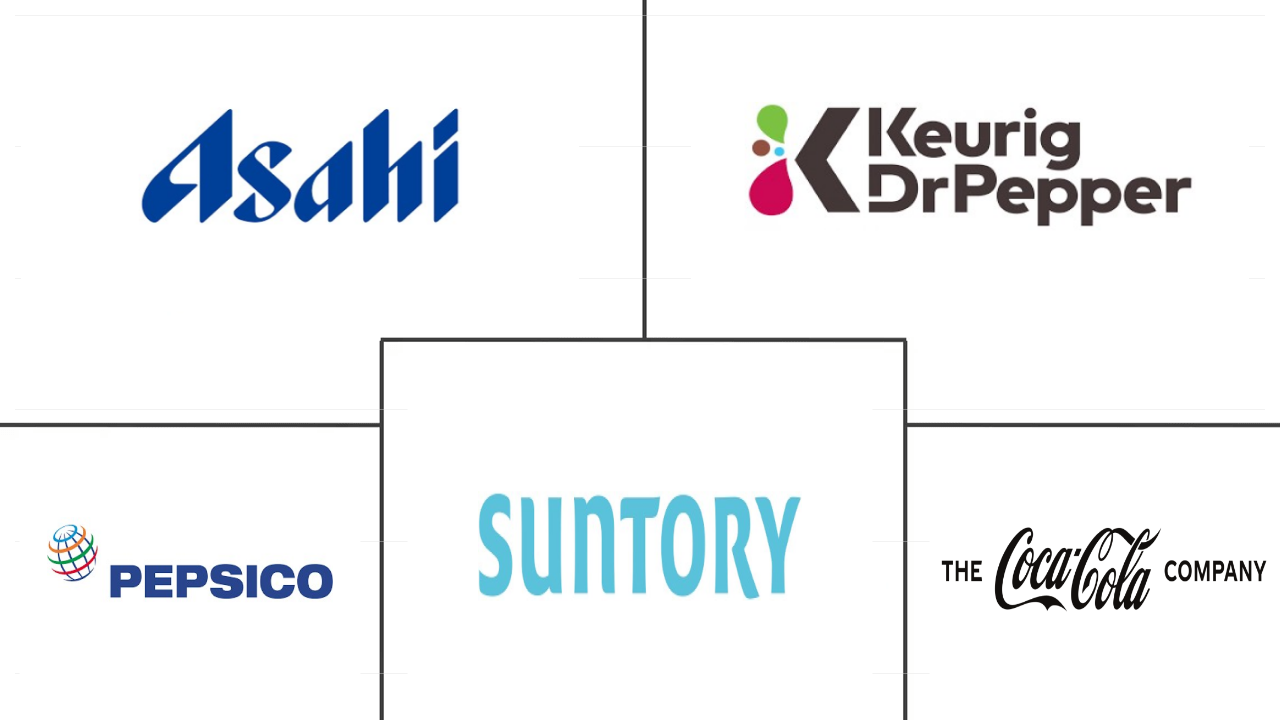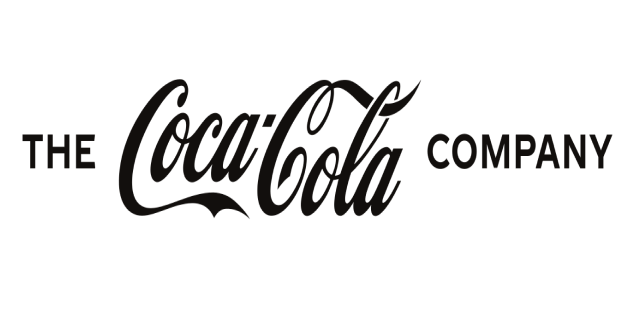Market Size of carbonated soft drinks Industry
|
|
Study Period | 2018 - 2030 |
|
|
Market Size (2024) | USD 343.4 Billion |
|
|
Market Size (2030) | USD 453.1 Billion |
|
|
Largest Share by Soft Drink Type | Standard Cola |
|
|
CAGR (2024 - 2030) | 4.73 % |
|
|
Largest Share by Region | North America |
Major Players |
||

|
||
|
*Disclaimer: Major Players sorted in no particular order |
Carbonated Soft Drinks Market Analysis
The Carbonated Soft Drinks Market size is estimated at 343.4 billion USD in 2024, and is expected to reach 453.1 billion USD by 2030, growing at a CAGR of 4.73% during the forecast period (2024-2030).
343.4 Billion
Market Size in 2024 (USD)
453.1 Billion
Market Size in 2030 (USD)
3.54 %
CAGR (2018-2023)
4.73 %
CAGR (2024-2030)
Largest Segment by Soft Drink Type
40.87 %
value share, Standard Cola, 2023
The superiority of standard cola is attributed to it being one of the oldest carbonated soft drink which is also the favorite drink to be paired with various fast foods.
Largest Region
33.70 %
value share, North America, 2023
Rising urban residents coupled with the demand from the younger population and growing number of social events are contributing to the market's supremacy in the North America region.
Fastest-growing segment by Soft Drink Type
4.94 %
Projected CAGR, Fruit Flavored Carbonates, 2024-2030
Fruit flavoured carbonates is thriving as an alternative to consumers looking for a different experience other than the standard cola, aided by the innovative flavor launches.
Fastest-growing region
8.12 %
Projected CAGR, Africa, 2024-2030
Changing lifestyles with influence from the western world and the growing need for instant refreshing beverages has attributed to the growth of market in the African region.
Leading Market Player
9.49 %
market share, The Coca-Cola Company, 2022

Coca Cola's market dominance is owing to its strong franchise distribution system, multiple production and distribution centers across the globe and prompt innovations.
Diversification of product launches, such as low and zero-calorie drinks, is driving the market growth
- Standard cola dominated the global carbonated beverage market, surpassing other variants. From 2018 to 2023, the standard cola market witnessed a robust CAGR of 5.05%. This growth can be attributed to the strong consumer demand for these beverages, primarily driven by renowned brands like Coca-Cola and Pepsi. These industry giants consistently allocate substantial resources to marketing and advertising, bolstering their market presence.
- The demand for diet cola is rapidly increasing, fueled by rising consumption worldwide. As consumers increasingly opt for lower-sugar options, carbonated soft drink (CSD) manufacturers are diversifying their portfolios. They are introducing low- and zero-calorie variants, along with a range of flavors, to tap into this growing trend. In February 2023, PepsiCo unveiled a caffeine-free lemon-lime soda, branded Starry Lemon & Lime, in both regular and zero-sugar versions. The company announced its wide availability across US retailers and food service outlets. Similarly, in January 2023, Pepsi introduced an enhanced iteration of its Pepsi Zero Sugar, featuring a revamped sweetener system for a more invigorating flavor profile.
- Fruit-flavored carbonated beverages are poised to witness the highest CAGR of 7.40% during 2024-2030. These sodas, often crafted with natural sweeteners and low or no-calorie formulations, align with consumers' growing health consciousness. The rising preference for natural ingredients and a desire for diverse taste options are expected to fuel the demand for these fruit-flavored, natural sweetener-infused sodas in the coming years.
Carbonated soft drinks, globally, are increasingly incorporating health attributes and ingredients that resonate with consumer preferences
- From 2019 to 2023, the global carbonated soft drinks market witnessed a robust 14.68% growth in value. This surge was primarily fueled by a rising consumer inclination toward healthier food options and a deliberate shift in ingredient choices by manufacturers. Consequently, the market saw the emergence of products like sugar-free, organic, and diet colas, gaining popularity as healthier alternatives. Notably, a diverse range of flavors and the association of certain brands with health benefits further bolstered this segment's growth. In 2023, Bisleri, a prominent brand, introduced four new variants, spanning fizzy cola, orange, and jeera flavors, under its sub-brands Rev, Pop, and Spyci Jeera. Similarly, in 2022, PepsiCo. unveiled Nitro Pepsi, a nitrogen-infused cola with a milder taste than traditional soft drinks.
- Throughout the study period, North America held the lion's share of the market, and this dominance is projected to continue, with an expected growth rate of 13.41% from 2023 to 2027. The region's affinity for carbonated soft drinks is deeply rooted in its traditional consumption patterns, often paired with meals. Notably, major fast-food chains like McDonald's and Domino's Pizza have ingrained soft drink orders into their affordable meal plans, further solidifying this preference.
- Africa is poised to be the fastest-growing market for carbonated soft drinks, with a projected value CAGR of 8.12%. The region's consumers are drawn to the wide array of soft drink offerings from various brands, with taste preferences playing a pivotal role. Notably, products with lower sugar and caffeine content are particularly favored in this region.
Carbonated Soft Drinks Industry Segmentation
Diet Cola, Fruit Flavored Carbonates, Standard Cola are covered as segments by Soft Drink Type. Disposable Cups, Glass Bottles, Metal Can, PET Bottles are covered as segments by Packaging Type. Off-trade, On-trade are covered as segments by Distribution Channel. Africa, Asia-Pacific, Europe, Middle East, North America, South America are covered as segments by Region.
- Standard cola dominated the global carbonated beverage market, surpassing other variants. From 2018 to 2023, the standard cola market witnessed a robust CAGR of 5.05%. This growth can be attributed to the strong consumer demand for these beverages, primarily driven by renowned brands like Coca-Cola and Pepsi. These industry giants consistently allocate substantial resources to marketing and advertising, bolstering their market presence.
- The demand for diet cola is rapidly increasing, fueled by rising consumption worldwide. As consumers increasingly opt for lower-sugar options, carbonated soft drink (CSD) manufacturers are diversifying their portfolios. They are introducing low- and zero-calorie variants, along with a range of flavors, to tap into this growing trend. In February 2023, PepsiCo unveiled a caffeine-free lemon-lime soda, branded Starry Lemon & Lime, in both regular and zero-sugar versions. The company announced its wide availability across US retailers and food service outlets. Similarly, in January 2023, Pepsi introduced an enhanced iteration of its Pepsi Zero Sugar, featuring a revamped sweetener system for a more invigorating flavor profile.
- Fruit-flavored carbonated beverages are poised to witness the highest CAGR of 7.40% during 2024-2030. These sodas, often crafted with natural sweeteners and low or no-calorie formulations, align with consumers' growing health consciousness. The rising preference for natural ingredients and a desire for diverse taste options are expected to fuel the demand for these fruit-flavored, natural sweetener-infused sodas in the coming years.
| Soft Drink Type | |
| Diet Cola | |
| Fruit Flavored Carbonates | |
| Standard Cola | |
| Other Types |
| Packaging Type | |
| Disposable Cups | |
| Glass Bottles | |
| Metal Can | |
| PET Bottles |
| Distribution Channel | ||||||
| ||||||
| On-trade |
| Region | ||||||||||||
| ||||||||||||
| ||||||||||||
| ||||||||||||
| ||||||||||||
| ||||||||||||
|
Carbonated Soft Drinks Market Size Summary
The carbonated soft drinks market is experiencing a dynamic evolution, driven by shifting consumer preferences and innovative product offerings. Standard cola remains the dominant segment, largely due to the strong brand presence of industry leaders like Coca-Cola and Pepsi, who invest heavily in marketing to maintain their market share. However, there is a notable shift towards diet and low-calorie options as health-conscious consumers increasingly seek alternatives with reduced sugar content. This trend is prompting manufacturers to expand their portfolios with zero-calorie and flavored variants, such as Pepsi's Starry Lemon & Lime, to cater to the growing demand for healthier choices. The market is also witnessing a rise in fruit-flavored carbonated beverages, which are gaining popularity due to their alignment with consumer preferences for natural ingredients and diverse taste experiences.
Regionally, North America continues to hold a significant share of the market, supported by traditional consumption patterns and the integration of soft drinks into meal offerings by major fast-food chains. Meanwhile, Africa is emerging as the fastest-growing market, driven by a preference for a wide range of soft drink flavors and lower sugar content. The global market is further influenced by factors such as urbanization, health awareness, and regulatory measures aimed at reducing sugar consumption. The market remains fragmented, with major players like Asahi Group Holdings, Keurig Dr Pepper, PepsiCo, Suntory Holdings, and The Coca-Cola Company holding a substantial portion of the market share. Innovations and product launches, such as Coca-Cola's AI-created Y3000 and Kirin's sugar-free beverages, reflect the industry's response to evolving consumer demands and regulatory landscapes.
Carbonated Soft Drinks Market Size - Table of Contents
-
1. MARKET SEGMENTATION (includes market size in Value in USD and Volume, Forecasts up to 2030 and analysis of growth prospects)
-
1.1 Soft Drink Type
-
1.1.1 Diet Cola
-
1.1.2 Fruit Flavored Carbonates
-
1.1.3 Standard Cola
-
1.1.4 Other Types
-
-
1.2 Packaging Type
-
1.2.1 Disposable Cups
-
1.2.2 Glass Bottles
-
1.2.3 Metal Can
-
1.2.4 PET Bottles
-
-
1.3 Distribution Channel
-
1.3.1 Off-trade
-
1.3.1.1 Convenience Stores
-
1.3.1.2 Online Retail
-
1.3.1.3 Supermarket/Hypermarket
-
1.3.1.4 Others
-
-
1.3.2 On-trade
-
-
1.4 Region
-
1.4.1 Africa
-
1.4.1.1 Egypt
-
1.4.1.2 Nigeria
-
1.4.1.3 South Africa
-
1.4.1.4 Rest of Africa
-
-
1.4.2 Asia-Pacific
-
1.4.2.1 Australia
-
1.4.2.2 China
-
1.4.2.3 India
-
1.4.2.4 Indonesia
-
1.4.2.5 Japan
-
1.4.2.6 Malaysia
-
1.4.2.7 South Korea
-
1.4.2.8 Thailand
-
1.4.2.9 Vietnam
-
1.4.2.10 Rest of Asia-Pacific
-
-
1.4.3 Europe
-
1.4.3.1 Belgium
-
1.4.3.2 France
-
1.4.3.3 Germany
-
1.4.3.4 Italy
-
1.4.3.5 Netherlands
-
1.4.3.6 Russia
-
1.4.3.7 Spain
-
1.4.3.8 Turkey
-
1.4.3.9 United Kingdom
-
1.4.3.10 Rest of Europe
-
-
1.4.4 Middle East
-
1.4.4.1 Qatar
-
1.4.4.2 Saudi Arabia
-
1.4.4.3 United Arab Emirates
-
1.4.4.4 Rest of Middle East
-
-
1.4.5 North America
-
1.4.5.1 Canada
-
1.4.5.2 Mexico
-
1.4.5.3 United States
-
1.4.5.4 Rest of North America
-
-
1.4.6 South America
-
1.4.6.1 Argentina
-
1.4.6.2 Brazil
-
1.4.6.3 Rest of South America
-
-
-
Carbonated Soft Drinks Market Size FAQs
How big is the Global Carbonated Soft Drinks Market?
The Global Carbonated Soft Drinks Market size is expected to reach USD 343.36 billion in 2024 and grow at a CAGR of 4.73% to reach USD 453.08 billion by 2030.
What is the current Global Carbonated Soft Drinks Market size?
In 2024, the Global Carbonated Soft Drinks Market size is expected to reach USD 343.36 billion.

